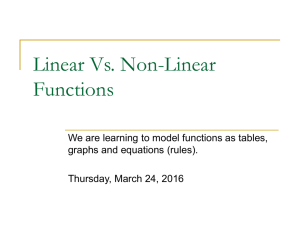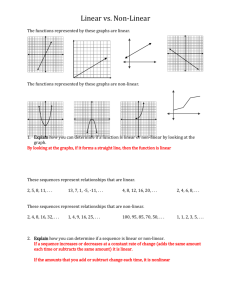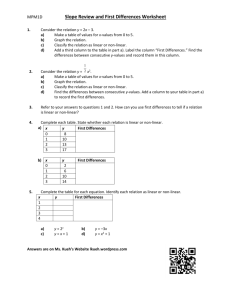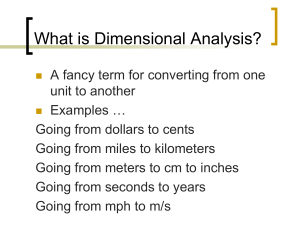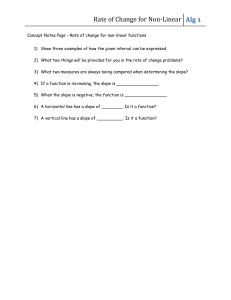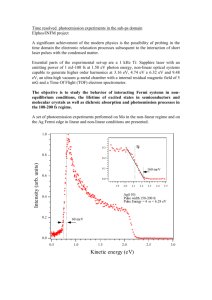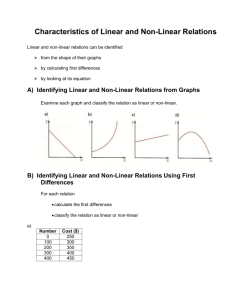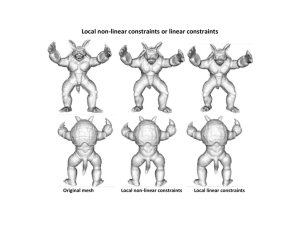Lesson 4-3
advertisement
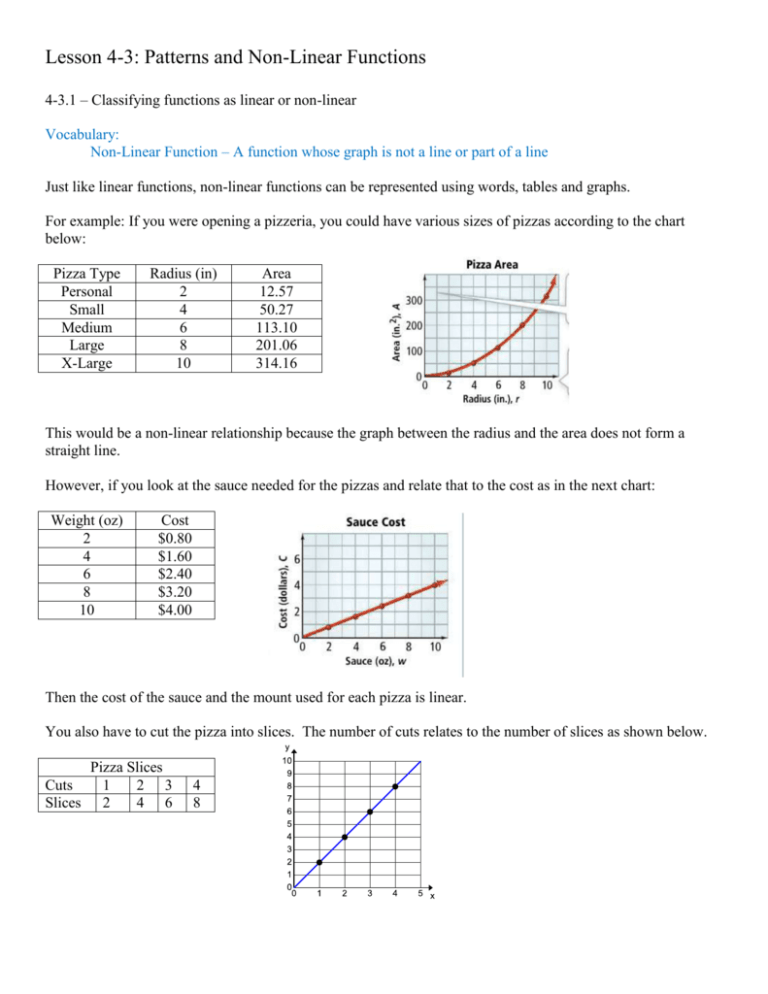
Lesson 4-3: Patterns and Non-Linear Functions 4-3.1 – Classifying functions as linear or non-linear Vocabulary: Non-Linear Function – A function whose graph is not a line or part of a line Just like linear functions, non-linear functions can be represented using words, tables and graphs. For example: If you were opening a pizzeria, you could have various sizes of pizzas according to the chart below: Pizza Type Personal Small Medium Large X-Large Radius (in) 2 4 6 8 10 Area 12.57 50.27 113.10 201.06 314.16 This would be a non-linear relationship because the graph between the radius and the area does not form a straight line. However, if you look at the sauce needed for the pizzas and relate that to the cost as in the next chart: Weight (oz) 2 4 6 8 10 Cost $0.80 $1.60 $2.40 $3.20 $4.00 Then the cost of the sauce and the mount used for each pizza is linear. You also have to cut the pizza into slices. The number of cuts relates to the number of slices as shown below. Pizza Slices Cuts 1 2 3 Slices 2 4 6 4 8 4.3-2 – Representing Patterns and Non-Linear functions The table shows the total number of block that makes up a cube as a function of the number of blocks on one edge. Edge Size 1 2 3 4 5 Total Blocks 1 8 37 ? ? Find the pattern, and you will see that the total number of blocks is the edge cubed, so 4 would be 43 𝑜𝑟 64 and 5 would be 53 𝑜𝑟 125. It would be non-linear. The equation would be 𝑦 = 3𝑥 4.3-3 – Writing a rule to describe a non-linear function The order pairs (1, 2), (2, 4), (3, 8), (4, 16), 𝑎𝑛𝑑 (5, 32) represent a function. What is the rule to represent this function. Rules that could get you from 1 to 2 would be 𝑦 = 2𝑥, 𝑦 = 𝑥 + 1 𝑎𝑛𝑑 𝑦 = 2𝑥 . The first two do not work for each of the others but the last one works for all three pairs. So 𝑦 = 2𝑥 is the equation for the function. What would the rule for the function represented by the ordered pairs (1, 1), (2, 4), (3, 9), (4, 16)𝑎𝑛𝑑 (5, 25) It would be 𝑦 = 𝑥 2
